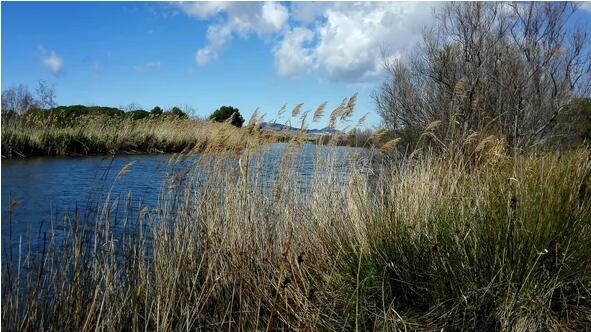(单词翻译:单击)
听力文本
This is Scientific American's 60-second Science, I'm Annie Sneed.
The first plants to come up with ways to live on land accomplished that feat some 580 million years ago. But how did they make the jump from water to terra firma? Looks like they might have had help—from bacteria.
To better understand the evolution of land plants, researchers looked at the DNA of two species of algae. Why algae? Well, because land plants evolved from this green goo. For their study, the team focused on a group of algae known to be the closest living relatives of land plants. The scientists compared the genomes of the two algae species to both land plants and other types of algae. The goal: to locate any important genetic similarities.
And the researchers actually discovered some significant matches between both of the two algae species and land plants—for example, a gene family called GRAS.
"And we were curious where that particular family came from, because it had already been studied before and was known to be important in handling desiccation, or dry conditions."

Gane Wong, a professor in biological sciences at the University of Alberta, one of the study leaders.
"So when we looked across, we searched for similar genes in all species—every known species that's ever been sequenced. And the only place that they were found, beyond algae and land plants, were bacteria—and in particular, soil bacteria. So that's one of the key points to suggest that it was transferred from bacteria."
The study was published in the journal Cell.
The thinking is that hundreds of millions of years ago, certain algae lived in freshwater that occasionally dried up. The algae then found a new home in the mud, which was also home to soil bacteria. And some of the bacterial DNA found its way into the algae, where it took up residence in the algal genome. In this way, the transfer of genes like GRAS, which helps in handling dry conditions, probably played a critical role in allowing plants to survive on land.
So unless the only plants you eat are seaweed, thank some bacteria for providing plants with a foothold on the earth.
Thanks for listening for Scientific American — 60-Second Science. I'm Annie Sneed.
参考译文
这里是科学美国人——60秒科学系列,我是安妮·斯尼德。
首批在陆地上生活的植物,大约在5.8亿年前完成了这一壮举。但它们是如何从水中跳到陆地上的?也许它们是得到了细菌的帮助。
为了更好地了解陆地植物的进化,研究人员观察了两种藻类的DNA。为什么是藻类?因为陆地植物由这种绿色粘性物质进化而来。在研究中,团队将重点放在一组已知的陆地植物近亲藻类上。科学家将这两种藻类的基因组与陆地植物和其它藻类的基因组进行了比较。目标是:找出基因的任何重要相似性。
研究人员确实发现了这两种藻类和陆地植物之间的一些重大匹配点,比如,名为GRAS的基因家族。
“我们很好奇这个特殊家族来自哪里,因为人们以前研究过,知道它在处理干旱方面非常重要。”
阿尔伯塔大学的生物科学教授Gane Wong说到,他也是该研究的负责人之一。
“因此我们在研究时,是在所有物种中寻找相似的基因,对每一个已知物种都进行了测序。除了藻类和陆地植物之外,我们只在细菌中发出了类似基因,尤其是土壤细菌。所以这是证明该基因是从细菌转移过来的关键点之一。”
这项研究发表在《细胞》期刊上。
这种想法认为,数亿年前,某些藻类生活在偶尔干涸的淡水中。它在泥巴中找到了新家,而这也是土壤细菌的家。某些细菌的DNA进入了藻类,并在藻类基因组中“寄居”。通过这种方式,像GRAS等有助于处理干旱的基因的转移,可能对植物在陆地上生存发挥了关键作用。
因此,除非蔬菜你只吃海藻,否则你就要感谢细菌为植物提供了在地球上的立足点。
谢谢大家收听科学美国人——60秒科学。我是安妮·斯尼德。
译文为可可英语翻译,未经授权请勿转载!
重点讲解
重点讲解:
1. come up with 想出,提出(计划、想法等);
No one has come up with a definitive answer as to why this should be so.
对于为什么应该是这样,还没有人想出最终确定的答案。
2. focus on 集中(注意力);关注;
The talks will focus on economic development of the region.
会谈将着重讨论该地区的经济发展。
3. dry up (使)枯萎;(使)干透;
The fountain is reputed never to dry up.
这口泉号称从不干涸。
4. take up 占领,占据,占有(位置、阵地);
He had taken up a position in the centre of the room.
他占据了房间中心的位置。


